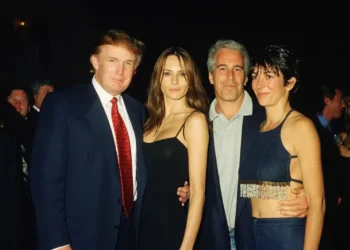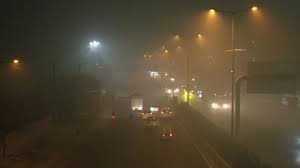From Delhi to UP, social media mocks the SC as its directives fail, exposing weak enforcement and growing public cynicism. Diwali pollution, extrajudicial demolitions, and police shootouts reveal a disturbing gap between law and practice in India.
By Navin Upadhyay
In a democracy, the judiciary stands as the guardian of the Constitution, issuing orders meant to protect rights, enforce laws, and maintain order. Yet, in recent years, a troubling trend has emerged: Supreme Court (SC) directives are being flouted with impunity, turning solemn judicial pronouncements into punchlines. From festive fireworks exploding beyond permitted hours to bulldozers demolishing homes without due process, and the all-too-frequent “encounters” in certain states, these violations erode public trust in institutions.
This article examines three stark examples—Diwali firecracker regulations, “bulldozer justice,” and encounter killings—drawing on social media discourse to highlight the growing chasm between court mandates and ground realities.
Diwali Firecrackers: A Burst of Disobedience
Every Diwali, the Supreme Court steps in to balance tradition with environmental concerns, restricting firecracker use to mitigate Delhi’s notorious air pollution spikes. In 2025, the Court permitted only “green crackers” — those with reduced emissions — between 8 p.m. and 10 p.m. on Diwali night. The intent was clear: curb the toxic haze that often chokes the capital for weeks, protecting vulnerable populations like children and the elderly.
But this year’s celebrations told a different story. Fireworks lit up the skies well beyond the designated two-hour window, with bursts continuing late into the night. Social media reflected both amusement and frustration. One user, @bobworld tweeted on October 21, 2025: “Hasn’t the Supreme Court of India really become irrelevant for the majority in India, of late, except for a select few people like us who still respect it? Nobody seems to respect it anymore.”
The post, shared amid reports of rising AQI levels, highlighted how enforcement often yields to cultural fervor or political optics.
Data from Delhi Pollution Control Committee and real-time monitors indicated that AQI levels surged to 300–380, placing the city in the “very unhealthy” category. While not as extreme as past years’ peaks, these levels still posed serious risks to children, the elderly, and people with respiratory conditions.
Journalist Rajdeep Sardesai @sardesairajdeep has long critiqued selective enforcement and regulatory lapses. His last night post on X showed his frustration over contemptuous flouting of Supreme Court curb.
“Important: It’s just past 11 pm. Crackers are being burst relentlessly in the neighbourhood. SC order was to restrict it from 8 pm to 10 pm. So what happened to enforcing the order? Delhi govt/police have much to answer when it comes to complete enforcement failure. And SC needs a reality check, too,” he wrote.
The result? Delhi residents again faced dangerous air quality for days after Diwali, igniting debates about whether judicial orders can coexist with entrenched cultural practices. Critics argue this is not mere oversight but a systemic failure: enforcement remains inconsistent, authorities appear hesitant, and citizens witness the gap between law and practice.
READ: After Hawking Nagalim Dreams for 50 Years, Muivah Returns Home — Empty-Handed
Bulldozer Justice: Demolitions Defying Due Process
If Diwali exposes environmental nonchalance, “bulldozer justice” reveals a cavalier attitude toward civil liberties. Popularized under Uttar Pradesh Chief Minister Yogi Adityanath’s administration, this tactic involves razing properties of alleged criminals — often without trials or notices — under the guise of clearing encroachments.
The Supreme Court, in a November 2024 ruling, slammed this as unconstitutional, mandating due process and warning of contempt proceedings against errant officers. “Bulldozer raj,” the Court declared, cannot supplant the rule of law.
Yet by October 2025, the practice persists unabated. In UP, demolitions occur almost daily. Assam and Madhya Pradesh have followed suit, with bulldozers rolling out sporadically but symbolically. Social media amplifies the outrage.
On October 1, 2025, historian Dr. Ruchika Sharma @tishasaroyan tweeted: “Openly defying Supreme Court’s orders against bulldozer action for the nth time now, but zero action has been taken against the UP govt by the Supreme Court. Is defying SC’s orders with impunity the new normal in India?”
She was responding toa post by Ani which showed a glaring case of bulldozer justice, It read: #WATCH | Bareilly, UP | Bulldozer action on Maulana Mohsin Raza’s property following his arrest in connection with the 26 September’s protests by a group of people who gathered outside Ala Hazrat Dargah & IMC chief Maulana Tauqeer Raza Khan’s house, holding ‘I Love Mohammad’ placards. The protestors pelted stones during the protests after the Friday prayers.”
Openly defying Supreme Court’s orders against bulldozer action for the nth time now, but zero action has been taken against the UP govt by the Supreme Court. Is defying SC’s orders with impunity the new normal in India? https://t.co/BNRlLItn1r
— Dr. Ruchika Sharma (@tishasaroyan) October 1, 2025
With no contempt convictions to date, these actions normalize extrajudicial vigilantism, disproportionately affecting minorities and the poor.
Encounter Killings
Complementing bulldozers are “encounters” — police shootouts resulting in suspect deaths, often hailed as swift justice. In UP, these have become routine: over 200 since 2017, according to human rights reports, with minimal investigations.
The Supreme Court, in a 2024 directive, ordered probes into all encounters, classifying many as potentially “fake” and mandating independent oversight to prevent abuse.
Reality bites harder. Encounters continue unabated, averaging one every few days in several parts of the country. Social media reflects a polarized discourse — supporters laud them as deterrents, critics decry state-sanctioned killings.
This pattern — kill first, probe later — mirrors bulldozer impunity, fostering a culture where police act as judge and jury.
The Broader Implications: A Judiciary in Jest?
These cases — firecrackers bursting through time limits, bulldozers rumbling over rights, and encounters silencing suspects — illustrate a systemic malaise. Social media serves as a digital town square amplifying voices the establishment ignores.
Even a post-Diwali quip on October 21, 2025, from @frontline_1965, dripped with irony:
“India is unique. Recently, a Supreme Court judge stated that he does not want to live in the capital after retirement due to pollution — now the same SC permitted firecrackers this Diwali.”
The fallout is profound: eroded judicial credibility, emboldened executives, and a populace cynical about the law’s reach.
Another user tweeted, “Supreme Court order on firecrackers sidelined bcoz implementation is not what the govt wants. So police look the other way.”
For the SC to reclaim authority, it must wield contempt powers decisively. Until then, its orders risk remaining the butt of jokes — exploding, demolishing, and vanishing into the night.













